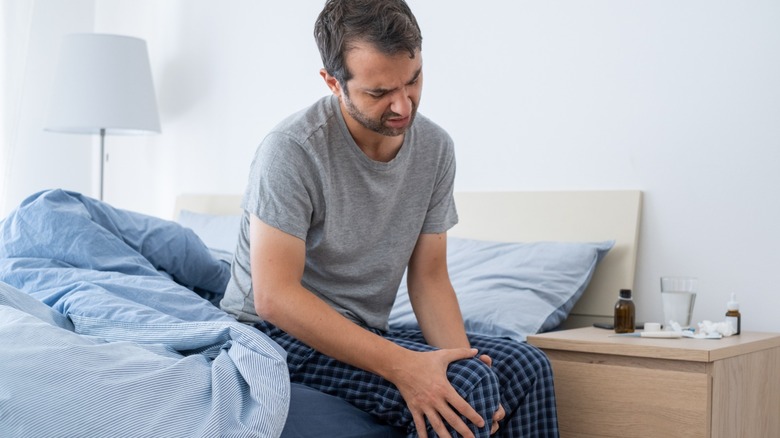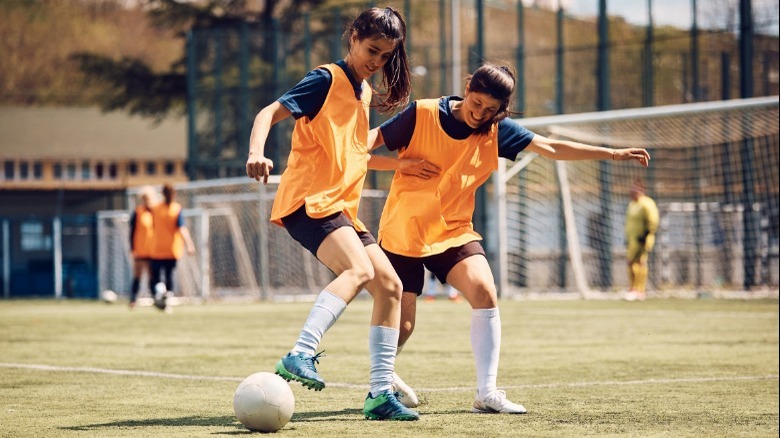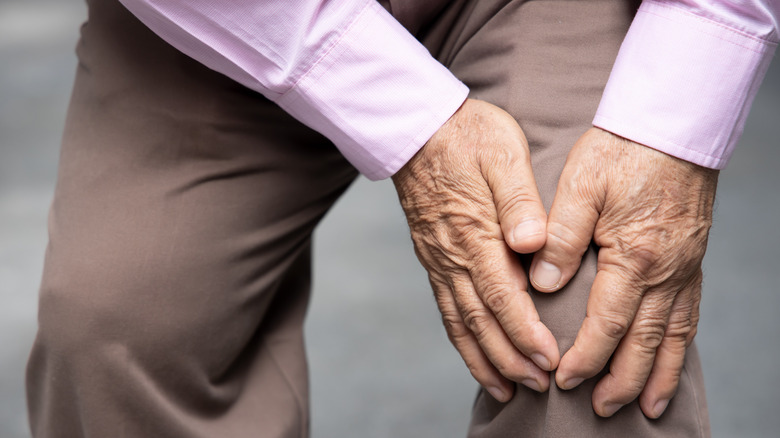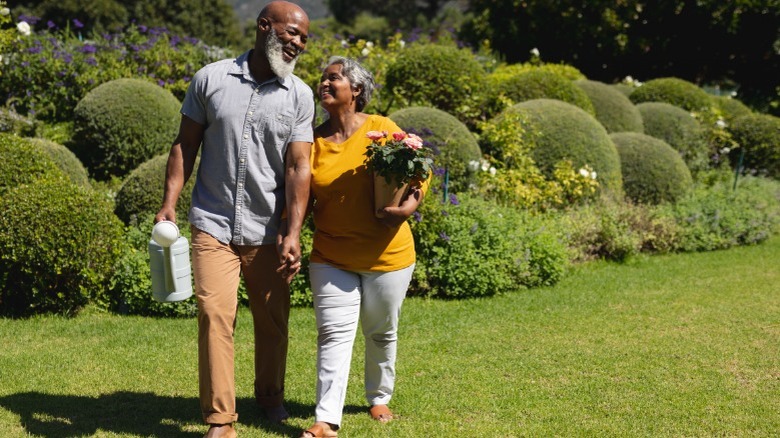Tips For Easing Stiff Knees At Home
The United States population stands at over 336 million, with roughly one-third of that number experiencing knee pain, according to Classic Rehabilitation, Inc. Knee pain is the second most common type of chronic pain across all age groups.
While it may seem obvious what knee pain is — especially when experiencing it firsthand — how knee pain and knee stiffness develop is the result of factors in relation to the cause and location of the issue.
Your knee is a vulnerable joint comprised of several parts that work together to make your knee function properly: namely bones, cartilage, ligaments, tendons, and muscles. Consequently, damage or deterioration to any one of these parts due to increased stress from daily wear and tear, aging, or high-impact activities will often impact the function of your knee joint and often lead to knee pain, per Johns Hopkins Medicine.
The experts at Johns Hopkins Medicine explain that your knee is mainly made up of three parts — your shin bone (tibia) thigh bone (femur) and kneecap (patella). The ends of your tibia and femur are fixed together at the knee through that network of ligaments, muscles, and tendons and surrounded by cartilage that absorbs shock to protect your knee.
Considering all the various components that make the knee work and how you subject it to walking, standing, lifting, and bending on a regular basis, it's no wonder that many of us are prone to one form of knee problem or another.
Common types of knee issues
Sprains, ligament tears, fractures, and dislocations are some of the most common types of knee conditions, according to the experts at the American Academy of Orthopaedic Surgeons (AAOS). For instance, you've probably heard about an active friend or sports figure who tore their ACL, or anterior cruciate ligament. The ACL is in the middle of your knee, holding the end of your shin bone in place. Often, when people tear their ACL they are engaging in an activity like soccer or basketball where quick pivots are intrinsic moves in the sport. However, whether or not you play a sport, you can tear your ACL by making a rapid change in direction. A torn ACL is also often accompanied by damage to cartilage, meniscus, or ligaments.
Another common knee injury is a partial or complete tear to the posterior cruciate ligament (PCL), which can result from a sports injury or a motor vehicle accident, per AAOS. The strongest ligament in your knee, the PCL extends from the top of your tibia to the bottom of your femur. The experts at Penn Medicine explain that knee dislocation and damage to blood vessels and nerves are often associated with a PCL injury.
Medical conditions that cause knee stiffness
Knee stiffness often accompanies knee injuries, so it makes sense that so many people complain about knee stiffness at some point. However, knee stiffness doesn't only come about as a result of an injury — it could also be a sign of an underlying medical condition.
One common cause of knee stiffness that is unavoidable for some is the development of osteoarthritis, which results from joint cartilage wearing down as you age. Osteoarthritis occurs when the reduced cartilage in your knee causes your bones to rub against each other, often resulting in pain, swelling, and stiffness. Another condition that can cause knee stiffness is rheumatoid arthritis, an autoimmune disorder that impacts your joints. You may also experience stiffness after knee surgeries — such as ACL reconstruction, knee arthroscopy, knee ligament repair, tendon repair, meniscus repair or transplant, plica excision, meniscectomy, and total knee replacement — per Healthline.
How to treat knee stiffness at home
Thankfully, home treatments can often help reduce knee pain and promote healing. First and foremost, resting your knee should be your priority, meaning you should avoid activities that put a strain on your knee, such as running or jumping. Also, icing your knee for 15-20 minutes several times a day may help reduce swelling. Elevating your knee on a pillow above your heart can also be effective. Additionally, low-impact exercises such as walking or water activities a few times weekly may provide relief. The experts at Healthline advise taking over-the-counter pain medication such as naproxen (Aleve) or ibuprofen (Advil) roughly 45 minutes before exercising.
Whether you're an athlete or someone who leads an active lifestyle, knee stiffness can be a real pain in the, well, knee. The good news is you can often treat knee stiffness at home. However, if your knee issues are the result of a severe impact or you are experiencing fever or redness and significant swelling in the affected area, contact your healthcare provider immediately, per Mayo Clinic.




